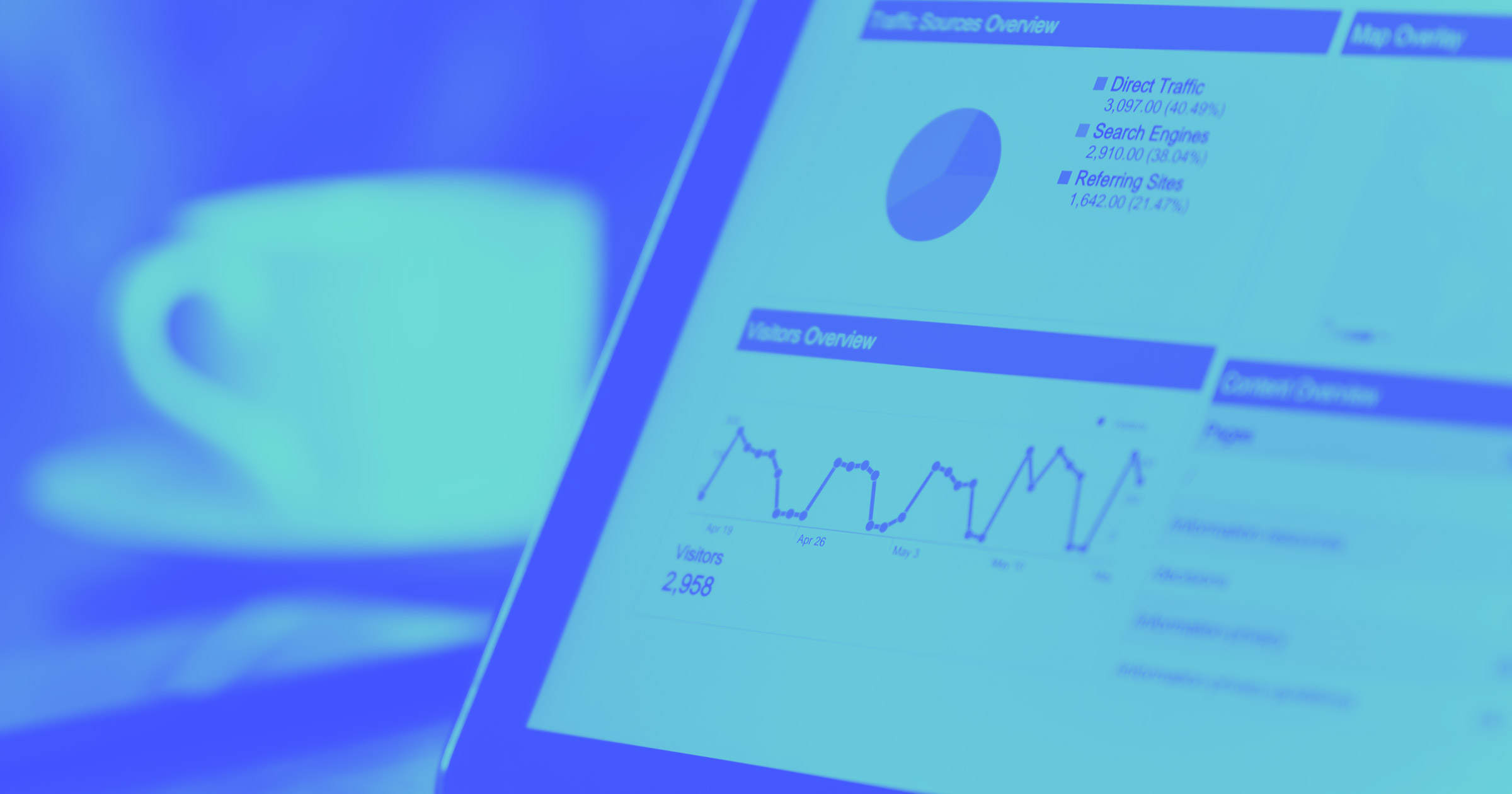Increasing website traffic is a worthy marketing goal, but long-term success depends on drawing and retaining the right audience.
Although site traffic quantity matters, it’s not the only important metric. While paid traffic offers quick surges, genuine interest from organic visitors ensures lasting growth and a returning community. Organic traffic stems from users genuinely interested in your offerings, making it key to sustainable, long-term growth.
To tap into this potential, let’s explore tactics to drive organic traffic, as well as the types of site traffic and metrics you can use to track it.
What is website traffic?
Website traffic refers to the number of users visiting your website. It’s a quantitative measurement of the number of people navigating and interacting with your site’s content.
Website traffic is measured through metrics like:
- Page views: Total number of pages a user visits on a website
- Sessions: The duration visitors remain active on your site, from the moment they land until they depart or remain idle for a specific time, usually 30 minutes
- Bounce rate: The percentage of users who exit after viewing a single page without interacting or performing any action, such as clicking a backlink or submitting a contact form
- Conversion rate: The percentage of users who take a desired action, like signing up for a newsletter or making a purchase
- Traffic source or type: Where the traffic comes from (more on this later)
Monitoring these site metrics provides insight into user behavior and engagement patterns. Identifying the most viewed pages informs content strategy, while pages with high bounce rates reveal potential technical issues such as long load times or missing content. You might also track traffic sources to identify the most effective marketing channels or referral sites, enabling you to allocate resources more strategically. These metrics go beyond statistics — they’re powerful tools for crafting an engaging and user-centric website experience.
What are the different types of website traffic?
Visitors take different pathways to reach your site. Understanding the different ways that people find your site can help you decide which marketing strategies to prioritize.
Here are some of the most common types of web traffic:
- Organic traffic. Organic traffic refers to users who land on your site through a search engine query without influence from paid advertisements. It indicates the effectiveness of your search engine optimization (SEO) efforts and how well your content aligns with user needs and search intent. It also signifies your site’s credibility and relevance without assistance from paid promotions.
- Direct traffic. Users typing your website’s address or URL directly into their browser generate direct traffic. These visits typically come from individuals already familiar with your brand, often through advertising or offline sources like word-of-mouth, and demonstrate strong brand recall and loyalty.
- Referral traffic. When visitors land on your site through links from other websites, they generate referral traffic. If an external site links to you, it’s essentially endorsing your content as valuable and signaling that your offerings or information are authoritative and trustworthy within the industry.
- Social media traffic. Clicks on links from social platforms such as Facebook, Instagram, or LinkedIn generate social media traffic. These backlinks often appear in profile bios, posts, video descriptions, or stories. Monitoring this traffic helps gauge the impact of social media strategies and campaigns, which is crucial for businesses targeting specific social platforms or for brands aiming to expand their reach through influencers and viral marketing.
- Paid traffic. Achieved through promotional efforts, paid traffic comes from users clicking on paid ads across platforms such as Google Ads, Meta ads, or Instagram sponsored posts. By investing in ads, you can tap into broader audiences and potentially increase your conversion rates.
- Email traffic. Users directed to your site through email links generate email traffic. These emails, whether informative newsletters or promotional alerts, often offer incentives such as discounts or free shipping to motivate subscribers to explore the site and its offerings further.
Why is organic traffic important?
Organic traffic is sought after by businesses because it is visitors who land on your site from unpaid sources, like search engine results, while searching for the content, products, or services you’re offering.
Visitors from organic traffic value your content and offerings because they align with their needs. This alignment often means users find what they’re searching for on your site, which builds confidence in your brand and encourages repeat visits. It also fosters a deeper connection with and loyalty to your brand.
Moreover, organic traffic is closely linked to higher conversion rates. By delivering tailored, high-quality content that aligns with users’ search intent, you can address their questions, alleviate their concerns, and solve their pain points. This guides them to conversion points more effectively, leading to increased sales, sign-ups, and other site actions.
Because organic traffic leads to better audience targeting, higher conversion rates, and improved brand reputation, it’s more sustainable and cost-effective in the long term compared to paid advertising.



















Unlock growth with SEO
Join Webflow and leading growth agency Graphite as they discuss actionable insights for scaling and achieving growth with SEO
6 ways to drive traffic to your website
Boosting site visibility and engagement are top priorities for any platform. However, depending on your objectives, some traffic-boosting strategies will resonate with your audience more than others. Here are six different approaches for boosting organic traffic to consider:
1. Search engine optimization (SEO)
SEO involves fine-tuning site elements like page titles, meta descriptions, and keywords to align with search trends. The more relevant your content, the more organic traffic it’ll garner from search engine users. Tools like Google Search Console and Ahrefs can uncover insights into your keyword performance, popular search queries, and technical site issues such as page load times and broken links, enabling you to refine your content and strategy for optimal search visibility.
2. Content marketing
Content marketing and SEO go hand in hand. Crafting informative articles and blog posts that resonate with your brand, offerings, and audience enhances your website SEO and positions your site as a valuable resource, increasing its rank on the search engine results pages (SERPs). When users search for topics aligned with your content, they’re more likely to discover your website in their search results and click through to engage with your material, providing a consistent flow of targeted visitors to your site.
Regular content updates are essential for keeping customers engaged and signaling consistent activity to search engines. Evergreen content — information that remains relevant over time, like how to design a logo — is especially important because it provides timeless, valuable content that appeals to returning visitors. Consistent web activity, coupled with the lasting value of evergreen content, positions your website as an authoritative resource and further improves your SEO.
3. Guest blogging
Guest blogging is similar to content marketing but extends your reach by writing for related industry websites. Embedding backlinks into guest posts you write for other sites elevates your SEO by sending endorsement signals to search engines and funnels interested readers directly to your site, boosting site traffic and amplifying your brand presence and authority.
4. Social media marketing
Social media marketing taps into the vast user bases of platforms like Facebook, Instagram, YouTube, LinkedIn, and TikTok. Each platform presents a unique opportunity to expand your website’s visibility. However, tailoring your approach to each platform’s audience is crucial.
On YouTube, an engaging video with a link in the description can direct viewers to your site. On LinkedIn, crafting and sharing thought leadership articles or industry updates can lead professionals back to your website to learn more. Aim to craft content that not only entertains or educates but also prompts users to explore further on your site.
Regardless of your platform choice, prominently feature backlinks with compelling copy in your profile and content to guide users smoothly from the platform to your site.
5. Influencer collaborations
Collaborating with influencers harnesses their extensive, engaged audience on social media platforms. When influencers endorse your brand or products, it resonates powerfully with their followers due to the trust they’ve established. Integrating calls to action (CTAs) or weaving in backlinks to your site within influencer content opens a pathway to a new, receptive audience. A beauty influencer showcasing your skin care products in a tutorial, for example, can spark curiosity among viewers, leading them to explore your offerings and possibly convert into customers.
6. User experience optimization
Focusing on user experience (UX) doesn’t just make your site better for users — it directly influences traffic volume and user retention. Ensure you don’t leave users waiting by optimizing your website performance to deliver fast page loads. You can also refine the website layout, establish a clear visual hierarchy, and provide a consistent experience across all devices to eliminate user frustration and enhance the user journey.
This attention to detail makes users more inclined to engage and explore, with swift load times and intuitive navigation driving longer session durations and increased page views. A seamless user experience and responsive site design make your site more shareable, naturally boosting its reach.
Conversely, slow-loading pages or sites with convoluted layouts deter visitors and negatively impact SEO. Such oversights spike bounce rates and look unprofessional, tarnishing your website’s reputation.
Design websites that drive growth
Generating organic traffic takes time and patience, especially for new website owners, but producing quality content regularly and choosing a trustworthy site-building platform can get you there faster. Our Designer tool enables you to design stunning websites with integrations to target specific demographics and measure performance. Build your next site with Webflow to attract, retain, and measure website traffic and drive growth.
Want to brush up on tracking site metrics (and improving them)? Visit Webflow University to learn the fundamentals of SEO and how to set up Google Analytics, or explore the Webflow blog for SEO tools and web traffic services.































